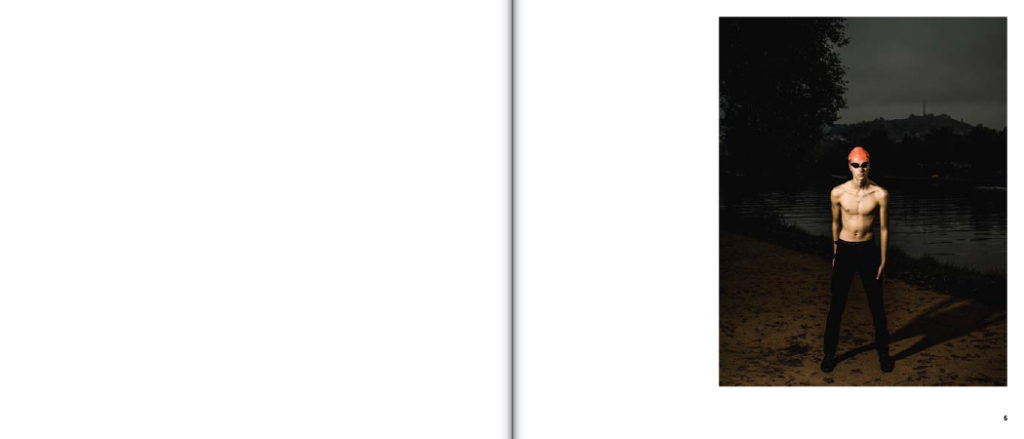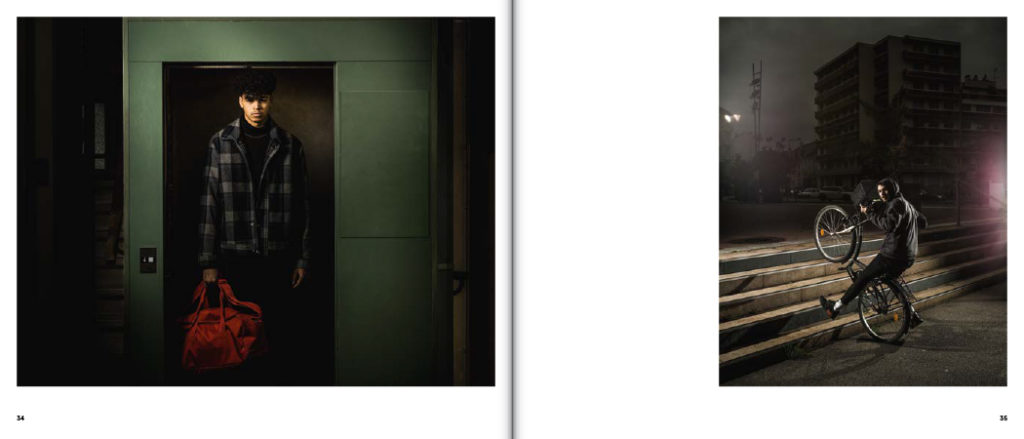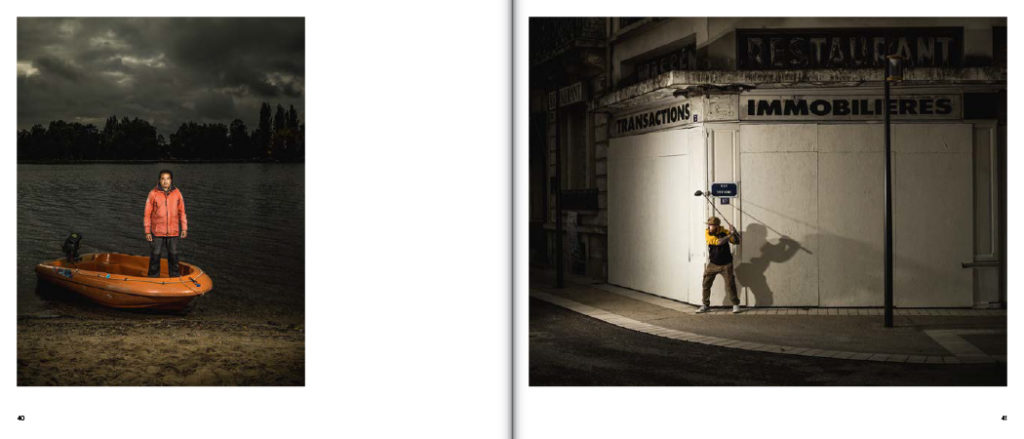In Vichy, early March 2019, as part of the Portrait Festival (s), Frédéric Stun Photography of Sportsmen. It is the theme of his residence, he made an appointment in advance, from Paris, with volleyballs, basketballs, swimmers … The coronavirus arrives before him. Plane the spectrum of next confinement. We close the gymnasiums. We cancel the games. The groupings are forbidden. So, the photographer imagines. What would sport be he had clandestine? If, unlike this positive activity, good for health, morale, social cohesion, it became unlawful, as it is in this time when everything is reversed? Subversive sport, hidden? There would be anxiety and the danger that clandestinity involves, of course, but also another form of enjoyment, that of transgression, from stolen pleasure.
Inspired by these images, the writer Didier Daeninckx, author of novels dedicated by the public and the critic, has invented a new, concentrated suspense and happy fantastic anticipation, on the footsteps of mysterious mutinas.
Frédéric Stucin
Photographe

Frédéric Strucc is a photographer since 2002. He collaborates with many media and institutions and pursues a personal artistic work, which mixes imaginary and real. His last book, La Source (Maison CF, 2021) is an exploration of the banks of the Seine at the first deconformation. Endorphine (Filigranes, 2021) embarks on the heart of illegal sports training during the sanitary crisis. Only Bleeding (editions of the spout in the air, 2019), is the story in pictures of a poetic wandering in the streets of Las Vegas. His photographs have been the subject of several exhibitions, including the Nicephore Museum Niépce de Chalon-sur-Saône, in the French Art Center in Brussels, at Villa Perochon in Niort, at the Gallery Vu in Paris.
Didier Daeninckx
Ecrivain

Didier Daeninckx was born in 1949 in Saint-Denis. From 1966 to 1975, he worked as a printer in various companies, then as a cultural animator before becoming a journalist in several municipal and departmental publications. He has since appeared about thirty titles that confirm a desire to anchor the intrigues of the black novel in social and political reality.
In 1983, he published Meurtres pour mémoire, the first investigation of the Cadin inspector who traces the manifestation of Algerians in October 1961 and the police repression that made a hundred deaths.







